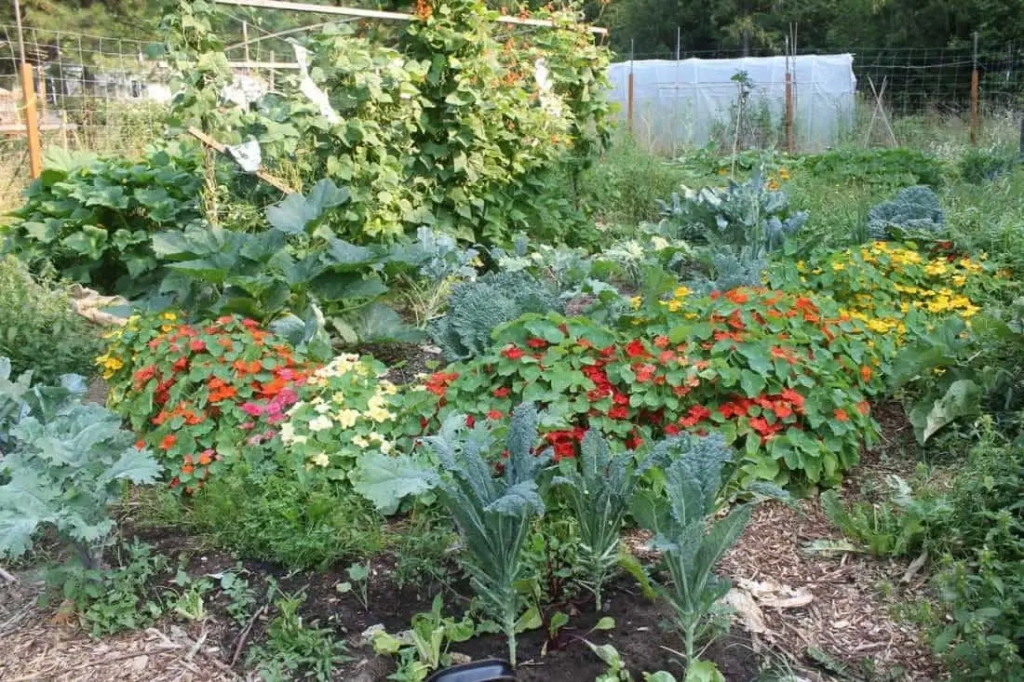Interplanting Flowers with Vegetables: Enhancing Your Garden’s Beauty and Productivity
Introduction
Gardening is not just about growing vegetables; it is also an opportunity to create a beautiful and harmonious space. Interplanting flowers with vegetables is a practice that has gained popularity in recent years, as it offers numerous benefits for both the gardener and the garden ecosystem. In this article, we will explore the advantages of interplanting flowers with vegetables, discuss some popular flower choices, and provide practical tips on how to successfully implement this technique in your own garden.
Benefits of Interplanting Flowers with Vegetables
1. Pest Control:
One of the significant advantages of interplanting flowers with vegetables is natural pest control. Many flowering plants attract beneficial insects such as ladybugs, lacewings, hoverflies, and bees. These insects help pollinate vegetable crops while preying on pests like aphids, mites, caterpillars, and thrips. By incorporating flowers into your vegetable garden layout strategically, you can increase biodiversity and keep harmful pests at bay without relying heavily on chemical pesticides.
2. Increased Yield:
Certain flowering plants have symbiotic relationships with vegetables that enhance their growth and productivity. For example, marigolds secrete compounds that repel nematodes – microscopic worms that damage root systems – making them excellent companions for tomatoes or potatoes. Similarly, borage attracts bees that aid in pollinating cucumbers or squashes resulting in higher fruit set.
3. Soil Health:
The presence of diverse plant species improves soil health by increasing organic matter content and enhancing nutrient recycling processes through different root structures. Leguminous flowers such as clover or vetch fix atmospheric nitrogen into the soil through specialized bacteria residing within their roots—this nitrogen enrichment benefits neighboring vegetable crops’ growth without synthetic fertilizers.
4. Aesthetics:
By intermixing vibrant blooms amidst your edible plants in creative patterns, vegetable gardens can become visually stunning landscapes. Flowers add color, texture, and dimension to an otherwise utilitarian space. They attract butterflies and other pollinators, creating a lively atmosphere that is not only productive but also visually appealing.
Popular Flower Choices for Interplanting
1. Calendula (Calendula officinalis):
Known as the “pot marigold,” calendula is a versatile flower that repels aphids and attracts beneficial insects like hoverflies. Its edible petals make it a useful addition to salads or herbal teas.
2. Nasturtium (Tropaeolum majus):
Nasturtiums are excellent companion plants for vegetables such as cucumbers, squash, and tomatoes because they deter pests like aphids and whiteflies. Both the flowers and leaves of nasturtiums are edible with a slightly peppery flavor.
3. Borage (Borago officinalis):
Borage is highly attractive to bees due to its blue star-shaped flowers rich in nectar. It acts as an excellent companion plant for strawberries, tomatoes, or squashes by enhancing pollination rates while deterring tomato hornworms.
4. Sunflowers (Helianthus spp.):
Sunflowers bring height and vibrancy to any garden bed while attracting bees and other pollinators with their abundant nectar-rich blooms. Their large size can provide shade for delicate vegetables like lettuce during hot summer months.
Practical Tips for Successful Interplanting
1. Plan Your Layout:
Before planting flowers among your vegetable crops, carefully plan out your garden design considering factors such as sunlight requirements, mature heights of plants involved, compatibility regarding water needs or growth habits.
2. Timing:
Ensure proper timing when sowing both seeds or transplanting seedlings of vegetables and flowers together so that they grow harmoniously side by side without one overshadowing the other’s growth potential.
3. Companion Planting Guide:
Refer to companion planting guides or charts specific to your region and crop preferences. These resources provide valuable information regarding which flowers work best with particular vegetables, ensuring maximum benefits for both.
4. Succession Planting:
To maintain a continuous display of flowers throughout the growing season, consider succession planting of annuals like calendula or nasturtiums. Sowing new seeds every few weeks will ensure a constant supply of blooms.
Conclusion
Interplanting flowers with vegetables is an effective way to create a productive and visually appealing garden space. The benefits are numerous: natural pest control, increased yield, improved soil health, and enhanced aesthetics. By selecting appropriate flower companions and following practical tips for successful interplanting, you can optimize the harmony between your vegetable crops and flowering plants while enjoying the beauty they bring to your homestead. Embrace this technique in your garden today and reap the rewards it offers both practically and aesthetically!


Leave a comment